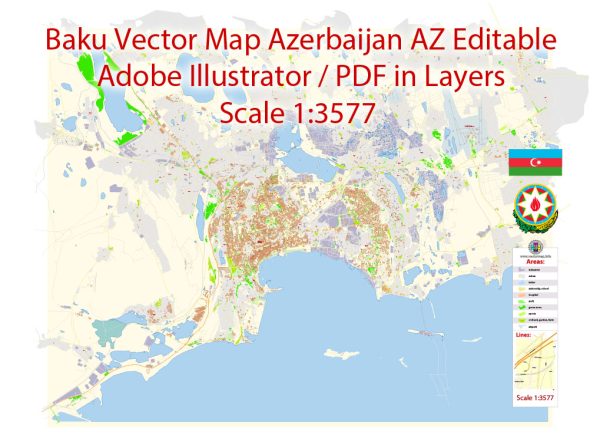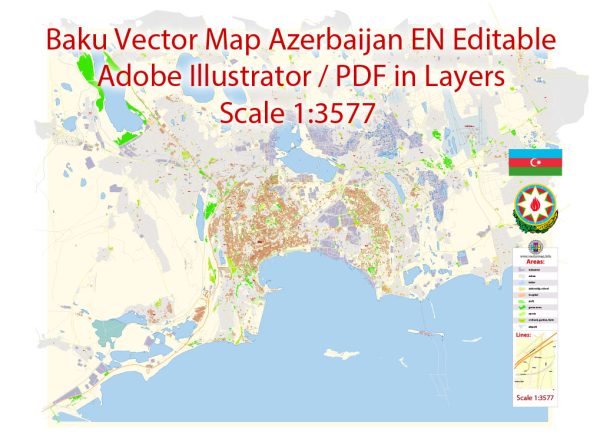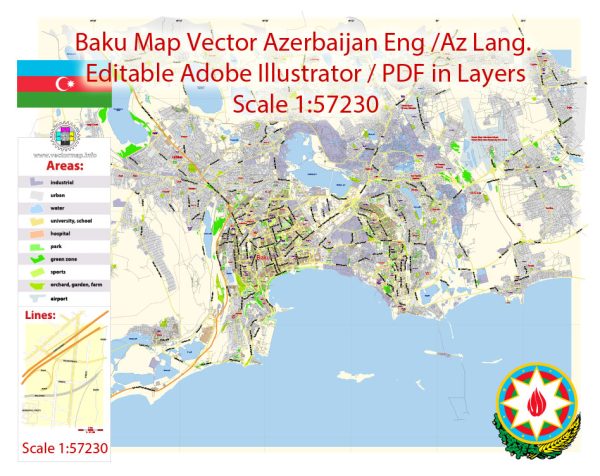Baku, the capital of Azerbaijan, has a rich and diverse history of urban development that spans several millennia. The city’s evolution has been shaped by various cultures, empires, and historical events. Here is a brief overview of the history of urban development in Baku:
- Ancient Baku:
- Baku’s history can be traced back to ancient times, with evidence of human settlement in the region dating as far back as the 1st millennium BC.
- The city’s early inhabitants engaged in trade, fishing, and agriculture. It was part of various Persian and Turkic empires over the centuries.
- Medieval Period:
- In the 7th century, Baku came under the influence of the Arab Caliphate and experienced the spread of Islam.
- The city was a prominent trading center on the Silk Road, connecting Asia and Europe.
- During the Middle Ages, Baku developed as a walled city with narrow streets and traditional Persian-style architecture.
- Safavid and Persian Rule:
- Baku was under Safavid Persian rule in the 16th century and experienced significant urban development during this time.
- The city’s fortifications were expanded, and it became a center of trade and commerce, especially in the production of silk and textiles.
- Russian Imperial Rule:
- In the 19th century, Baku became part of the Russian Empire. The discovery of oil in the region in the 19th century led to rapid industrialization and the influx of foreign capital.
- Baku’s population and urban landscape expanded significantly to accommodate the booming oil industry, with the construction of modern infrastructure, including oil refineries and transportation networks.
- Early 20th Century:
- Baku played a pivotal role in the development of the oil industry, and it became known as the “Black City” due to its oil production.
- The city’s architecture reflected various styles, from traditional Azerbaijani to European influences.
- Soviet Era:
- Baku was part of the Soviet Union from 1920 to 1991. During this period, the city saw further industrialization and urbanization, including the construction of Soviet-style residential and administrative buildings.
- The city’s population continued to grow, and various infrastructure projects were undertaken.
- Post-Soviet Independence:
- After gaining independence in 1991, Baku experienced significant changes in its urban landscape. The city underwent modernization and saw the construction of modern skyscrapers, shopping malls, and cultural landmarks.
- The oil industry continued to be a major economic driver, but the city also diversified its economy and developed tourism.
- Contemporary Baku:
- Today, Baku is a dynamic and cosmopolitan city, known for its modern architecture, including the iconic Flame Towers and Heydar Aliyev Center designed by renowned architect Zaha Hadid.
- The city has invested in improving public spaces, cultural institutions, and transportation infrastructure.
- Baku is also known for hosting international events, including the Eurovision Song Contest, the European Games, and Formula 1 Grand Prix races.
Baku’s history of urban development reflects the city’s transformation from a medieval trading hub to a bustling modern metropolis with a rich cultural heritage and a strong connection to its oil industry history. The city’s architectural diversity is a testament to its multifaceted past and present.




 Author: Kirill Shrayber, Ph.D.
Author: Kirill Shrayber, Ph.D.